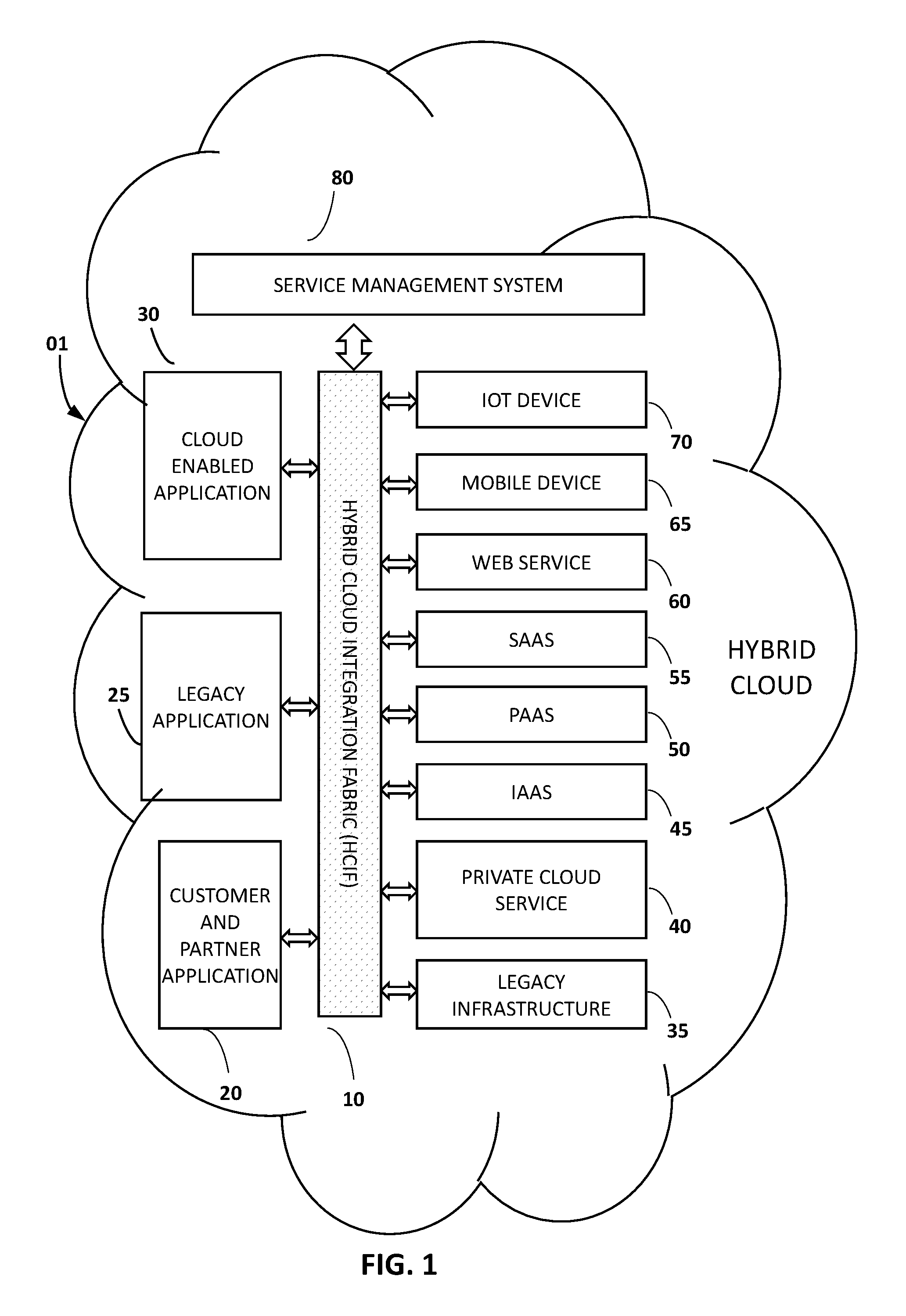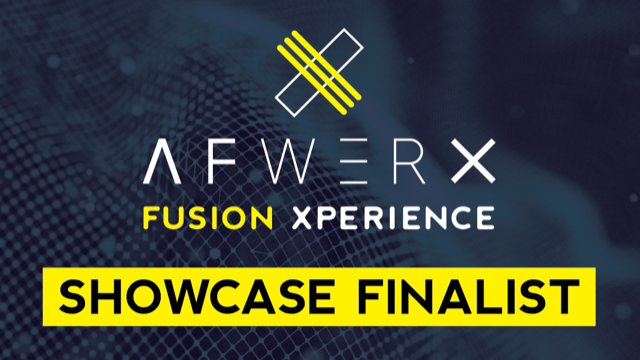How metaDNA™ is different than microservices, containers and APIs
There is quite a bit of buzz and confusion around microservices, containers, API’s, service meshes, and other emerging technologies related to “cloud-native” application development and data integration; unfortunately, PrivOps has been caught up in the confusion. I often get questions about our (now patented) technology, specifically metaDNA™, the core of our technology, where folks try to categorize us incorrectly.
'To be clear, metaDNA™ is not an API manager (e.g. Mulesoft), a container orchestrator (e.g. openShift), a service mesh (e.g. Istio), a integration platform (e.g IBM IIB), a master data manager (e.g. Informatica), it is an entirely new category. Let me explain. (And yes, I understand that the vendors mentioned above have products that span multiple categories)
To understand metaDNA™, first we need some context. For example, the concept of a microservice is an abstraction that is a manifestation of the interplay between modularity and atomicity (i.e. irreduciblity) at the software architectural layer. There are many other other abstractions at and between other layers of the technology stack, including the interface (e.g. APIs, UIs), server (e.g virtual machine, container) the network (e.g. packets, protocols), the structural (e.g. object-oriented, functional constructs), the language (e.g. high level software instructions that abstract assembly language instructions that abstract hardware operations), and so forth.
Two important questions are:
Is there currently a modularity gap that sits between microservices (software architecture), functional programming and data structures?
Would it matter if an abstraction filled that gap?
Is there a modularity gap that sits between microservices, functional programming and data structures? The answer is yes, which is what my metaDNA™ ontology (and the metaDNA™ catalog that implements the metaDNA™ ontology) attempts to remedy. For those unfamiliar with the term ontology, it is simply a structured way of describing (or building in this case) a class of object structures and the relationships between those objects. (More on ontologies here.) Because of its ontology, the metaDNA™ catalog serves as an abstraction layer that sits between (and unifies) microservices, functional programming and data structures and constitutes an entirely new paradigm for building digital technology. metaDNA™ builds on other abstractions like microservices and containers, but doesn’t necessarily replace them. Like biological DNA, metaDNA™ objects have 4 atomic types, with uniform structures. In the same way biological DNA composes lifeforms, objects from the metaDNA™ catalog compose software components (microservices) AND data structures from EVERY type of structured data. This approach creates the opportunity for several advantages for hybrid cloud applications, including self-referential data and applications, data defined software applications that reconfigure based on context, policy driven application behavior changes, and several others.
Does it matter if an abstraction layer fills the gap between microservices (software architecture), functional programming and data structures? Absolutely, because without it, microservices based software architecture complexity growth is still exponential, even with the use of APIs, containers and service meshes. For example, the cost point to point integration among legacy and modern systems grows exponentially at the rate of ½KN(N-1) where K is the cost of each integration and N is the number of connections. Adding tools adds a similar exponential cost growth. While the modularity afforded by various solutions at the API, microservice and other layers flattens the cost curve, without addressing the modularity gap between the application and data layer the curve is still exponential and still runs into scalability problems, especially for situations like Digital Transformation that requires integration of large numbers of legacy systems and edge computing (even with 5G).
- Tyler
PrivOps awarded contract with US Air Force
Alpharetta, GA. — PrivOps, the leading open data fabric provider, is proud to announce that the US Air Force Small Business Innovation Research (SBIR-STTR) team has selected PrivOps in partnership with JJR Solutions, LLC in a competitive bid process, and PrivOps is officially under contract with the US Air Force. PrivOps has been tasked with creating a plan to leverage their patented data integration, automation, and application development technology to solve some of the US Air Force’s most pressing needs. (More about their recently granted patent here.) PrivOps has already obtained signed commitments from multiple organizations within the US Air Force to support PrivOps’ efforts operationalizing their platform for the Air Force’s needs. Here are some of the needs the Air Force has identified that PrivOps and JJR Solutions are working to address:
Provide automated, policy-driven control of registering transactions on blockchain technologies (e.g., Hyperledger) to secure software chain of custody and detect malicious code manipulation
Provide an event-driven service mesh that makes it possible to detect threats and other operational events and respond in near real-time (self-healing applications)
Implement a distributed Enterprise Information Model (EIM) to support deployment of a data aggregation and transformation system in the cloud
Enable a zero-trust model and Attribute-Based Access Control (ABAC) for automating data governance between modern and legacy systems to support new data analytics, multi-domain operations (MDO), and multi-domain command and control (MDC2) capabilities
Create cross-domain data pipelines with microservices that incorporate best-of-breed, interchangeable commercial off the shelf (COTS) and open source artificial intelligence (AI) and machine learning (ML) software solutions, making it possible to take advantage of new technologies as they become available
“We are delighted to be working with the US Air Force, and are extremely impressed by their commitment to innovation. We are also excited to be partnered with JJR Solutions, LLC in this effort and look forward to leveraging their world class expertise around data, integration, and governance. We look forward to helping the Us Air Force make our warfighters more effective, safe and secure as they protect our nation” - Kit Johnson, CEO, PrivOps
About the USAF SBIR-STTR Program
AFRL and AFWERX have partnered to streamline the Small Business Innovation Research process in an attempt to speed up the experience, broaden the pool of potential applicants and decrease bureaucratic overhead. Beginning in SBIR 18.2, and now in 19.3, the Air Force has begun offering 'Special' SBIR topics that are faster, leaner and open to a broader range of innovations.
Learn more about the US Air Force’s SBIR-STTR program at https://www.afsbirsttr.af.mil/
About PrivOps
The PrivOps Matrix is a next-generation data and applications integration platform designed to optimize the process of incorporating new technologies into data flows and integrating applications and data at scale. Proprietary point-to-point and service bus integration architectures requiring specialized talent create processes that don’t scale and are difficult to support; the PrivOps Matrix multi-cloud integration platform minimizes rework and maximizes re-use with an open, scalable, and agile hot-pluggable architecture that connects best-of-breed vendor and open source solutions to both modern and legacy applications and databases in a way that is much easier to support and maintain. As a result, US Air Force information technology will adapt faster to an evolving battlespace by being able to apply agile processes to integration while combining best-of-breed tools and emerging technologies with legacy systems.
PrivOps receives US patent 10,491,477 for the PrivOps Matrix
We are excited to announce that as of 12/18/2019, the PrivOps Matrix is officially patented. US patent 10,491,477, Hybrid cloud integration fabric and ontology for integration of data, applications, and information technology infrastructure” is confirmation of PrivOps; technical leadership and innovation in helping organizations deal with data sprawl by making is easier to protect and monetize data wherever it lives.
By integrating, governing and automating data flows between complex systems, the PrivOps Matrix serves as the foundation for building hot pluggable information supply chains that monetize data. We control, at scale and in real time, where sensitive data lives, how it’s processed & stored, and when, who or what has access.
The key innovation in the Matrix data fabric is the patented metaDNA catalog. Just as biological life is built from structures defined by standard sets of genes composed with reconfigurable DNA molecules, “digital molecules” stored in the metaDNA catalog are combined to create “digital genes”. These recipes will make it possible to build self-assembling microservices, applications, integrations, and information supply chains that can be reconfigured in real-time as the environment changes. The result is IT technology that will be more scalable, resilient and .adaptable than anything that exists today.
This is a momentous occasion for PrivOps. Special thanks goes out to Daniel Sineway, our patent attorney at Morris, Manning & Martin, LLP and our advisors Scott Ryan (ATDC), Walt Carter (Homestar Financial), Gary Durst (USAF) and many others who have supported us so far.
The PrivOps Matrix is Selected as a Finalist for 2019 Air Force AFWERX Multi-Domain Operations Challenge
We are honored to announce that PrivOps has been selected as a finalist in the AFWERX Multi-Domain Operations (MDO) Challenge!
We are honored to announce that PrivOps has been selected as a finalist in the AFWERX Multi-Domain Operations (MDO) Challenge! We will be pitching to the Air Force at their big conference hashtag#AFWERXfusion19 in Las Vegas July 23-24. In addition, we are delighted to announce that we are partnering with JJR Solutions, LLC as they bring purpose-driven capabilities to improve the health, well-being, and security of our communities and nation. We share the same desire for our country to be strong and knowing MDO is a top area of focus for the Air Force and Department of Defense makes us highly motivated. This competition gives us the opportunity to help our country automate data governance through trusted open-source software and our data fabric. Our solution supports real-time decision-making and allows the flow of data to be stopped instantly if a threat is detected. Very exciting! AFWERX MDO
Challenge info: https://lnkd.in/ghQeGAv
Conference info: https://lnkd.in/erkv269
GDPR is Eating the World - Part 2
Think about it – if your organization gets much better at handing data, what else can it do?
You’ve heard it all before.
- Software is eating the world
- Data is the new oil
- Monetize your digital assets
You believe how well a company uses and manages data is the key to 21st century competitiveness.
You might have even sent some colleagues a link to Andreesen’s Software is eating the world article. No response. Many of us have fallen into the same trap.
"Better, faster, cheaper doesn’t sell – With a world suffering from information overload, no one’s buying."
Bottom line: With a technical value proposition, you must show, not tell.
Imagine if Henry Ford had sold his first car based on a pitch about his assembly line. Wouldn’t have gone over so well. Instead, he used assembly line’s technical value proposition (remember there were over 100 car manufacturers at the time) to create a car at a new price point. Instead of better, faster cheaper, the value proposition was –
“Now you can afford the same transportation as the rich”
What does this have to do with GDPR?
With 99 recitals, GDPR does many things, but a core underlying concept is Privacy by Design. What this means is that organizations with EU resident data need to design in privacy from the ground up. In other words, companies must get (a lot) better at controlling data.
Unfortunately, this is just another version of the better, faster cheaper story: It doesn’t sell either to customers, or to other executives in the company.
Think about it – if your organization gets much better at handing data, what else can it do?
If you’re a b2b marketing or financial payments company, you could extend your offerings to include data governance for your customer’s customer data.
“Now you can afford the same data governance as the rich companies”
If you’re a commercial banker, you could avoid regulatory fines while finding the experiences millennial crave and create richer, experience-based customer engagement with your payment solutions.
“Now you can afford to be treated with the experiences you deserve”
The point is, even though ignoring the operational risks I mentioned in Part 1 of this article could land your organization on page 1, that pitch doesn’t win you friends (or customers) either inside or outside your organization (except, perhaps your CFO).
A better approach for legal, compliance & operational professionals
is to attempt to partner with the business to create new customer engagement, with richer experiences, more personalization and attack or create new markets with new business models. Like going to the gym, universal data governance is building new muscles and endurance. But sell the hike to Machu Pichu or the new girlfriend, not the long trips to the YMCA.
GDPR presents a trigger point: Don’t fall into the better, faster, cheaper trap.
There’s a sad reality though – most people who buy gym memberships never set foot in the gym a second time. The same is true with data governance/GDPR compliance. Given the short term thinking prevalent in so many organizations, many executives in these organizations are not interested in the heavy lifting required to put data governance in place as a catalyst for richer customer engagement and access to new markets.
In that case, the right time to push for GDPR compliance in operations will be after the front-page article comes out, or after the organization is disrupted by digital natives like Amazon or Apple. At that point it will be too late of course…
This is the second part of a 2 part article on GDPR. You can find the 1st part here.
Learn more about how to how to solve for GDPR through automation at www.privops.com
GDPR: the tip of the iceberg - Part 1
You've updated your cookie polices, your privacy notices, contracts & agreements. Brand new process documents are in place. It was quite the fire drill, but you're ready for GDPR. Time for some well deserved rest.
Then you get the call
Job well done, it's time to celebrate!
You've updated your cookie polices, your privacy notices, contracts & agreements. Brand new process documents are in place. It was quite the fire drill, but you're ready for GDPR. Time for some well deserved rest.
Then you get the call
A complaint was filed by someone who visited your website anonymously claiming they asked for all their data to be deleted under GDPR's Right to be Forgotten requirement and your company never provided a confirmation receipt. Now Ireland's ICO (information commissioner's office) has launched an investigation. "How is that possible, we don't even have an office in Ireland, and the user was anonymous for goodness sake!", your CEO remarks. After the investigation, it turns out that, even though you have documented processes and trained your employees, nearly 25% of the 200 or so monthly right to be forgotten, data portability, data access, and profiling opt-out requests were dropped. To make matters worse, a low level marketing manager provided thousand of customer records containing sensitive data to an marketing analytics startup that was promptly hacked. You didn't know about it, so you're also in violation of GDPR's 72 hour breach notification requirement.
The good news, the regulator tells you, is that you weren't deliberately avoiding compliance with GDPR. She probably uses the word "mitigating". Because of the "mitigating factors" they decide the penalty will be only 2% of your annual revenue or 325 Million Euros (instead of the maximum 4%)
But the damage is done. That low level marketing manager is gone, but because of the negative press, your EMEA revenue drops a startling 18%, you miss earnings, and your stock drops 35% over the ensuing months. Now Carl Icahn and Greenlight Capital have put up their own slate of board members and they've indicated they intend to take your company private. 1000s of people lose their jobs.
How is this possible?
This story is fictional, but it's a very real scenario that companies will face in the ensuing months and years. The reality is that GDPR is more than privacy notices and breach notification requirements, it's about protecting personal rights - and meeting those requirements requires highly effective processes. To be sure, updating your notices is required, but to protect your data, protect your customers, and protect your job, you need to make sure your operations can handle the processes GDPR requires.
Automation: A requirement for GDPR compliance
In part 2, I'll talk about how meeting GDPR compliance requirements can actually help your company disrupt the competition.
Hear from PrivOps's COO at Fintech South
Hear Tyler Johnson's take on GDPR and the future of Fintech
Credit: BooDigital Here: https://boodigital.com/ https://twitter.com/talksdotcoffee https://www.facebook.com/coffeeshoptalks/
Facebook: A Cautionary Tale in Data Protection
Just last week, I noted that the UK's Information Commissioner’s Office (ICO) closed its investigation into Facebook under GDPR (the EU's new data protection law) sharing personal data with WhatsApp who they acquired in 2014 when Facebook agreed that the Facebook and Whatsapp platforms would not share data.
At the time I noted that this was a great example of GDPR's strategic company risk. Sharing customer data is usually one of the primary reasons for M&A; without it, the value of such transactions is often dramatically reduced. I wonder how many CFOs are accounting for GDPR strategic risk in their M&A strategy. Probably not many.
Wow that was quick - It just got much worse for Facebook
I just watched Mark Zuckerberg's mea culpa about the Cambridge Analytica breach on CNN. I believe he's "really sorry", there's no question his company is real trouble.
But did the activity carried on by Cambridge Analytica's Facebook user data constitute a security breach? In this case, hackers didn't compromise either FB or Cambridge Analytica, so one would have to argue that no, it wasn't a security breach.
A new concept (for some): PRIVACY BREACH
In the US, the laws governing privacy are weak to non existent. We're used to privacy notices being buried; an extensive data brokerage market exists where companies are free to sell your personal data for practically any use, including how much you pay for services, what job interviews you get, what ads you see and so on.
CIO.com: Inside the Shadowy World of Data Brokers
But as Facebook is about to discover, that doesn't mean there isn't legal risk. Lawsuits have already been announced. It's clear Facebook's troubles are just beginning.
For data privacy in the EU, things are quite different. There's no question that Cambridge Analytica's use of is a clear violation of GDPR. Ireland and the UK have already both opened investigations. The fines are likely to be tame since GDPR doesn't go into enforcement until May, but it's a near certainty EU regulators will find other ways to enforce a maximum penalty of 4% of Facebook's $40 Billion (about $1.6 Billion) . This pales in comparison to their brand risk, not to mention the risk the other 3rd parties have retained personal data scraped from Facebook and put (or will put) that information to use.
What's your risk that 3rd parties retained personal data your company gave them?
How may EU citizens are likely to stop using Facebook altogether? To understand this, let's talk about the EU consumer, and the cultural forces driving GDPR.
For many in the EU data privacy = Freedom
It's been explained to me that Europeans have a cultural memory of the Nazi "surveillance state" and this is one of the primary reasons why Europeans take data privacy so seriously (EU friends, would love your thoughts below on this) GDPR is notable, not because of the hefty fines, but because it makes control of personal data an individual right.
The Facebook Cambridge Analytica privacy scandal is sure to strengthen this perception because of the Trump campaigns' use of personal data to manipulate voters (Democrats, you're not off the hook either - see this article). This makes the likelihood of GDPR action against US companies much more aggressive than it otherwise would have been.
What can the US companies learn from the Facebook scandal?
While Facebook's situation is extreme compared to most US companies at present, most companies collect significant amounts of sensitive personal data, and with that comes significant responsibility, and risk.
GDPR is a major risk for companies with EU customers (or who otherwise handle EU resident data), but as the Facebook situation clearly demonstrates, it's not just regulatory risk and it's not just in the EU.
On one hand, we need this data to do a better job creating products and experiences customers want. On the other hand, handing such data in a consistent secure manner company wide is very difficult, especially when that data lives in many places and with 3rd parties. Companies that engage in M&A activity are especially at risk because their personal data is often fragmented across hundreds (or even thousands) of data silos.
Compliance with GDPR is a good start. If Facebook had automated data governance in place that fully complied with GDPR (including controls for 3rd party access like Cambridge Analytica) , their risk would have been much lower. If you'd like to know more about data governance automation for GDPR, look here.
GDPR: Understanding the Risks and Opportunities
Data is the lifeblood of every company. Knowledge of your customers and the ability to use that knowledge to create better new products and customer experiences is how enterprises survive and thrive in the 21st century.
But that data must be protected.
Data is the lifeblood of every company. Knowledge of your customers and the ability to use that knowledge to create better new products and customer experiences is how enterprises survive and thrive in the 21st century.
But that data must be protected. As we’ve seen from high profile breaches at large organizations like Equifax and the NSA as well as many smaller companies, large, well-funded and organized threat actors are taking advantage of increasingly sophisticated tools and techniques to exponentially grow business risk.
Globally, governments have taken notice and have introduced new regulations requiring organizations to employ new methods designed to safeguard customer and employee data from not just cyberattacks, but also misuse of the data.
As the threat and regulatory landscapes rapidly evolve, new data protection regulations introduce significant and growing operational risk as well as new business risks.
What is GDPR?
The General Data Protection Regulation is the 2016 data privacy law enacted in the European Union (and likely the UK as well). After a 2-year grace period, enforcement will begin in May 2018, and at that point, up to 4% of global company revenue and unlimited liability is at stake for US companies with European customers. Here are some of the new or enhanced key requirements that will be most challenging to handle.
GDPR: Risk, Opportunity or Neither?
Regulatory Risk
Many people believe that GDPR applies only if a US organization has a physical presence in Europe, but this is not true. If an organization has customers or employees in Europe or accept EU resident data, then GDPR applies. But not all risks are created equal.
The headline is that after May 2018, up to 4% of global company revenue and unlimited liability is at stake for every US company with EU customer or employee data, but actual penalties will depend on many mitigating or aggravating factors.
- Extent to which the company is pursuing a privacy/security by design strategy
- Quantity of personal data
- Potential breach impact (nature of the data)
- Willful or accidental misuse of personal data by collectors and/or processors
- Company brand visibility
- Etc.
Unfortunately, it is difficult to assess this risk up front; a GDPR readiness and risk assessment is required to establish the risk cost equivalence. Additionally, there are other types of risk to consider: Operational, liability, strategic and brand risk are also significant.
Operational Risk
Many organizations lack the controls that make it possible to even know where all their customer data lives, much less understand the impact if that data were to be misused. But finding, classifying and assessing personal data is only the beginning; the real work begins with making business and IT operations compliant.
Operational risk is exacerbated by the fact that the landscape for compliance and security is rapidly evolving, driven by new threats, new actors, as well as new case law and policy changes. Without automation, GDPR compliance costs can grow over time & overwhelm organizations.
Compliance Automation
- Supports Privacy by Design
- Reduces errors leading to enforcement and/or breaches
- Reduces cost by automating compliance workflows
- Reduces the threat surface with approaches like pseudonymization & encryption
GDPR’s Strategic Risk & Opportunity
In addition to Regulatory and Operational risks, there are significant strategic risks to consider
Competitiveness: GDPR requirements make scalability more difficult, which makes it necessary to source additional hard to find talent, limits use of predictive analytics for decisions, inhibits new product development, and makes it more difficult to enter new market segments
- Customer Experience: Some organizations, instead of evolving, will choose to reduce risk by limiting the use of personal data. This can happen without leadership even being aware. Over time, the ability to deliver new, more personalized customer experiences will be drastically limited
- Trust With so many high-profile breaches, even comparatively minor GDPR enforcement actions could permanently impair a company’s brand and damage its relationship with customers, employees and partners.
Although the operational, regulatory and strategic risks are real, GDPR can also represent an opportunity to create competitive advantage. By utilizing GDPR as an opportunity to begin automating, you begin to create a more agile enterprise while supporting the costs of compliance with the savings you achieve through automation.
GDPR can be more than just a risk to mitigate, it can be the catalyst needed to create a 21st century digital enterprise.
ATDC Fintech Hackathon - Winners of the Worldpay Prize
The energy was amazing and it didn't hurt to come back with a share of the prize money as part of the PupWalkr team - wnners of the $5,000 Worldpay prize.
I really had a great time at ATDC's Fintech Hackathon last week. The energy was amazing and it didn't hurt to come back with a share of the prize money as part of the PupWalkr team - wnners of the $5,000 Worldpay prize.































